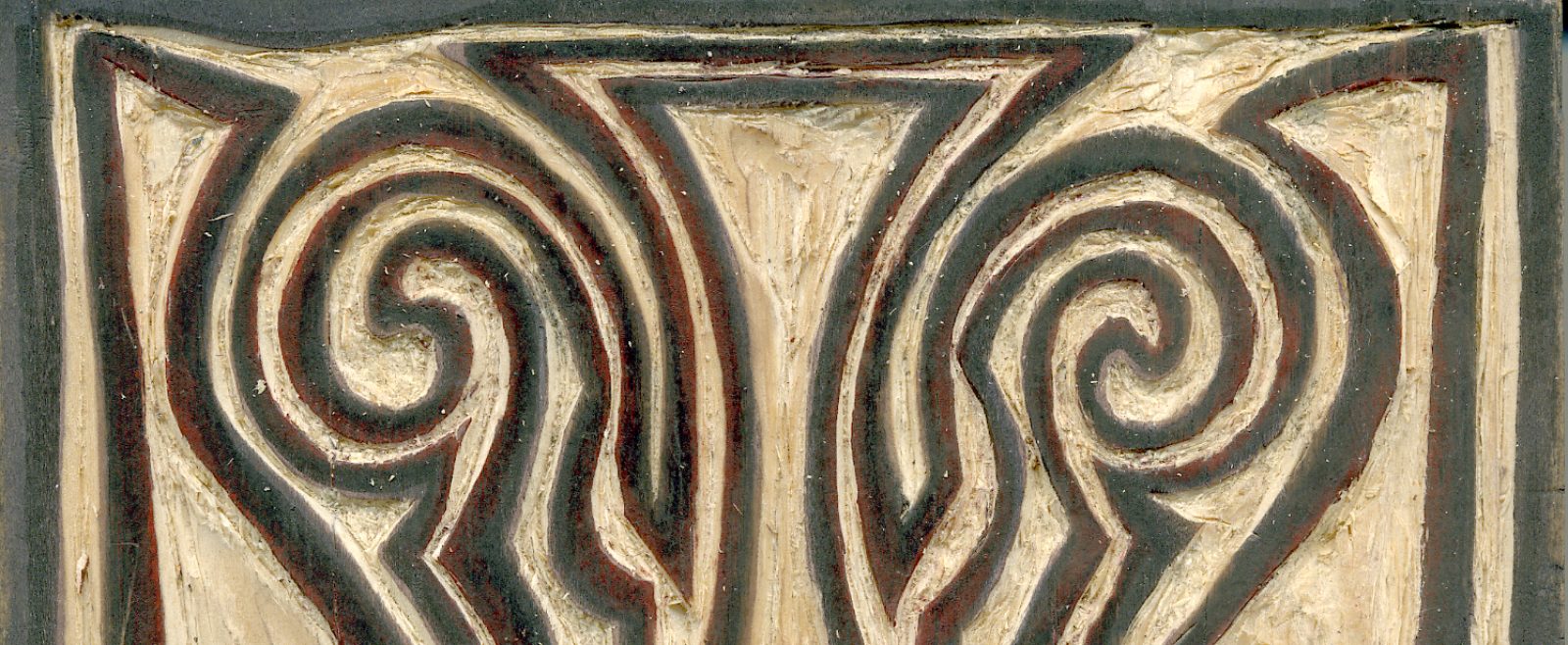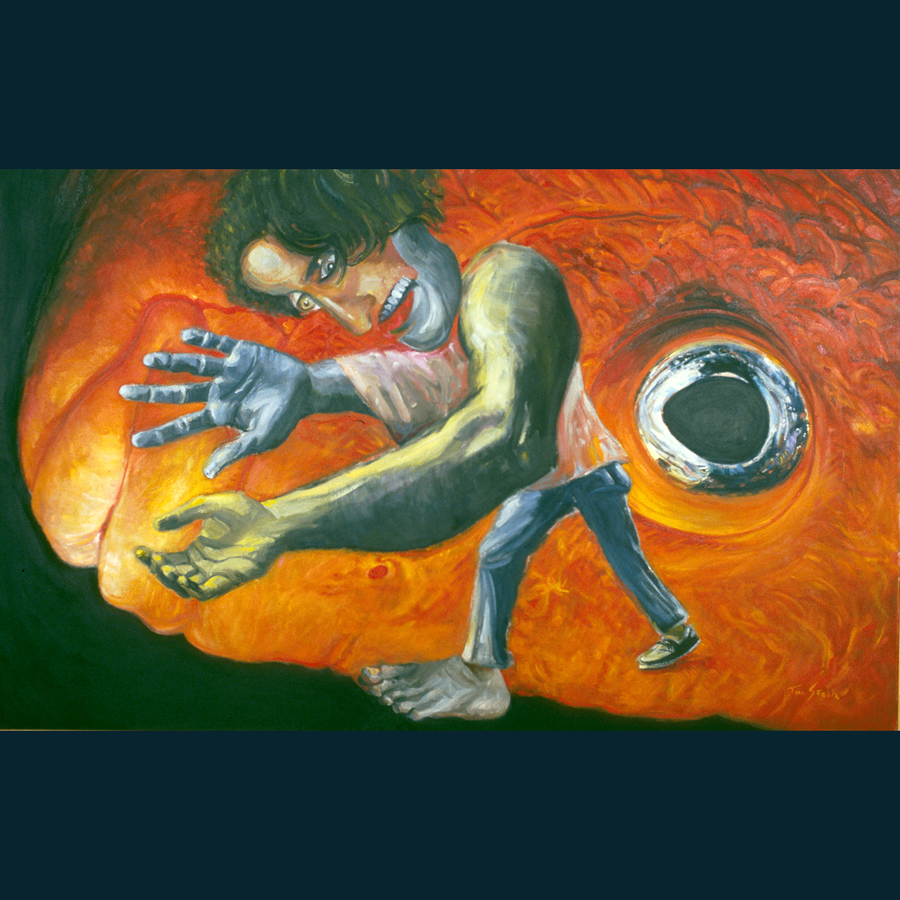
The Inspiration for “Cain”
“Cain, Or Hitler In Hell” by George Groz, was a huge inspiration for me to paint this story. I wanted to portray something similar to Groz. Cain’s state of mind after killing his brother, rather then a depiction of Ables’ murder. First of all, “Cain” started as a graphite drawing on canvas. Afterward, I painted over it in oil colors. June 5, 1999 is the first entry I found in my sketchbooks for the Idea, and Oct, ’99 was the last. Some of the preliminary work was lost creating “Cain” other than the notebook sketches and the Photomontage below. The canvas is 36”X58” and it’s in a private collection.
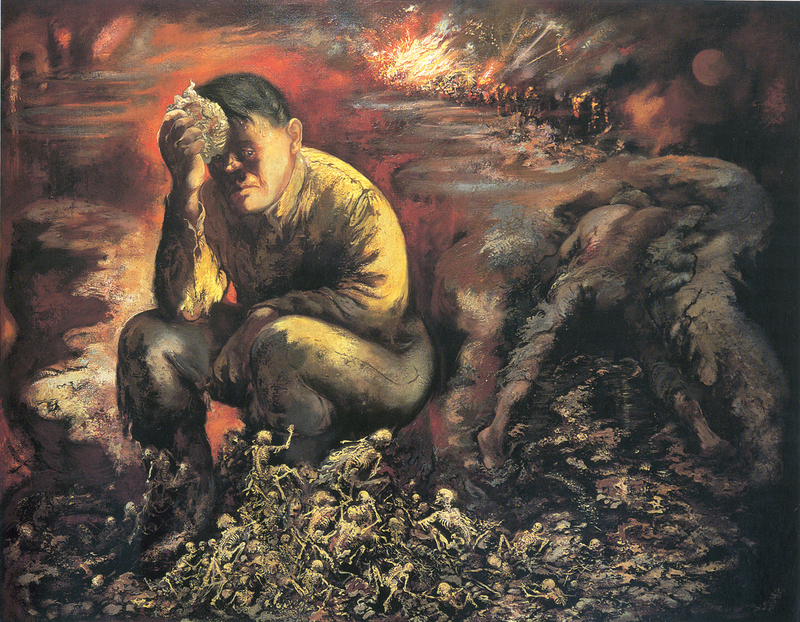
“13But Cain answered the Lord, “My punishment is too great to bear! 14Since You are banishing me today from the soil, and I must hide myself from Your presence and become a restless wanderer on the earth, whoever finds me will kill me.”
15Then the Lord replied to him, “Therefore, whosoever slayeth Cain vengeance will be taken on him sevenfold. “And the Lord set a Mark upon Cain, lest any finding him should kill him. 16Then Cain went out from the Lord’s presence and lived in the land of Nod, east of Eden.” – Genesis 4:13-16.
The story of Cain and Able in art history.
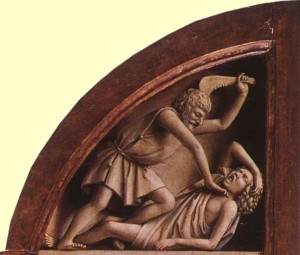
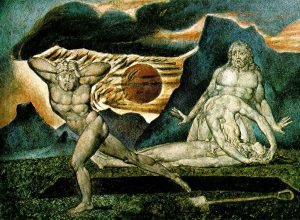
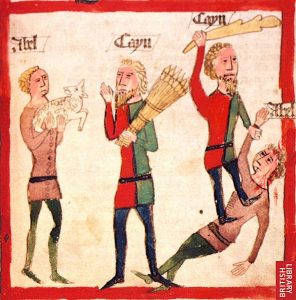
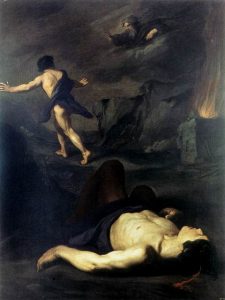
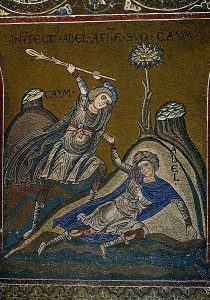
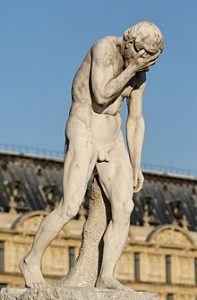
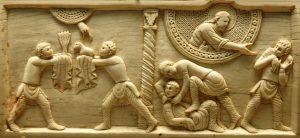
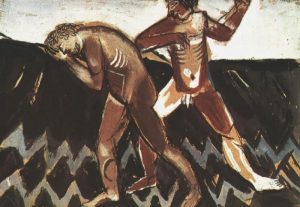
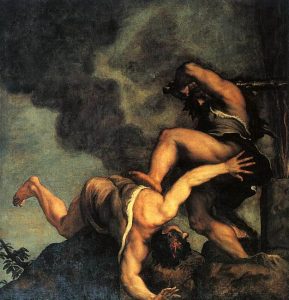
Preliminary Sketches
Cains’ isolation from God was my primary focus in the preliminary sketches below, therefore I wanted to depict him confronting his hands, awakening to the purpose he used them for, and the consequences. In a small watercolor, I represented Cain walking out of frame aimlessly under a harvest moon, through a blood red field, passing a dying tree.
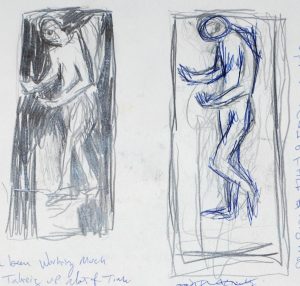
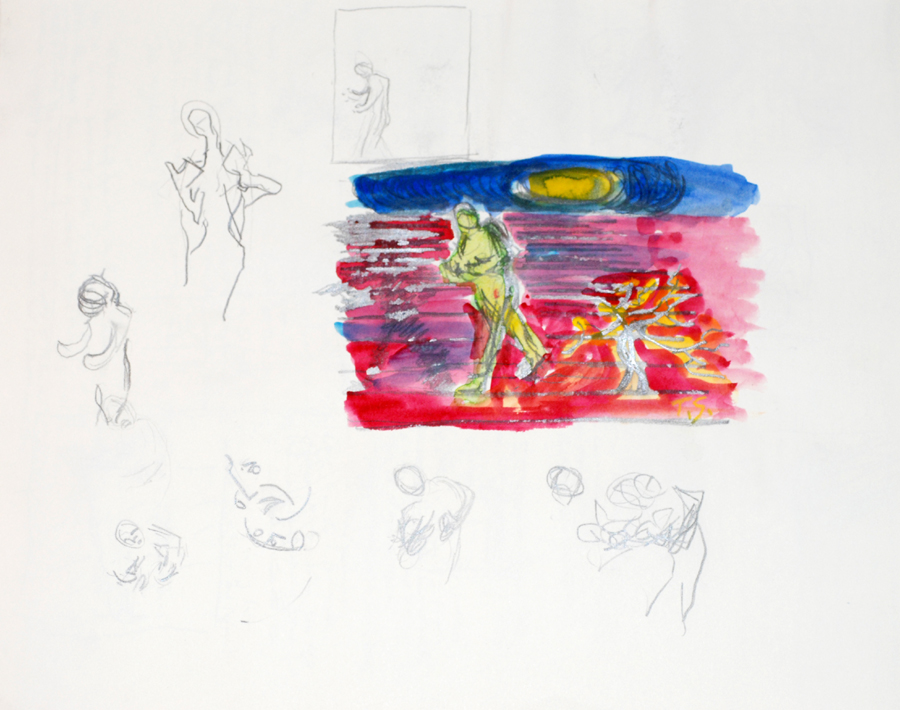
Making the transition from quick sketches to some sort of painting was my next challenge. Stylistically I had to decide how to tell the story of Cain and Able. My primary medium at this point was scraps of colored-aid papers. A large discarded arm, from another project called “St. Francis the Troubadour” was my starting point.
I cut various shapes and positioned them to form Cain’s body in different poses, similar to St. Francis above. Unfortunately, I couldn’t come up with anything worth keeping. Consequently, the only element worth using was the forearm shape I started with. I finally moved on after a several days of working on the idea, realizing the paper-cutout was a dead end.
Making the collage
Frustrated from being confined to the (6″X9”) matrix of the colored-aid papers, I stopped working on Cain’s figure and turned my attention to the background as a result. I spent lots of time thumbing through stacks of full-page photo magazines, eventually coming across a large photo of a goldfish. The giant goldfish as a backdrop was exactly what the piece needed to pull the idea together. Finally, the symbolism and color were perfect. It resembled my small watercolor above without having to use a typical foreground, middle ground, or background. Also, the surface area was much larger, and the fish added a Surrealist edge to the idea.
Now the project was leaning toward a Photomontage. Photos of body parts from various magazines were cut out and substituted for all of the colored shapes used in the collage. Piecing him together like Frankenstein’s monster, I payed particular attention to Cain’s head, hands, and feet. Trying to preserve the Goldfish-background I used as few pieces as possible, leaving him disjointed and falling apart. After several days cutting magazine photos with an X-acto knife I ended up with the results below.
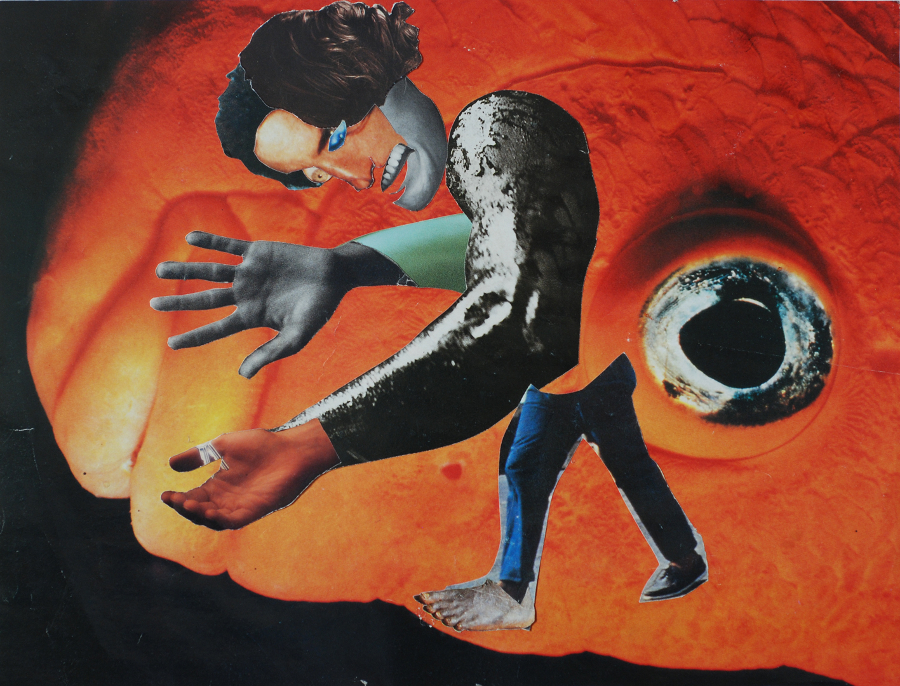
“Cain”, from collage to painting
My next challenge was how to make a painting from the photomontage I did above. The first possibility was to duplicate the montage exactly, as an oil painting, or radically distort the proportions of the composition was another option. After working on the watercolor studies (below), I decided to represent the montage as a drawing first, then paint over it.
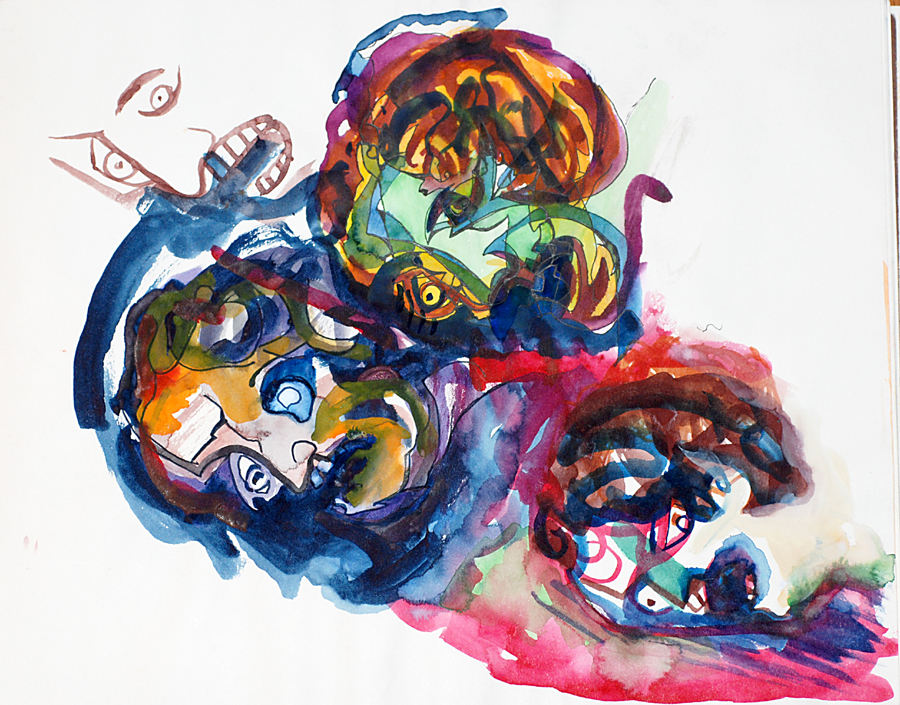
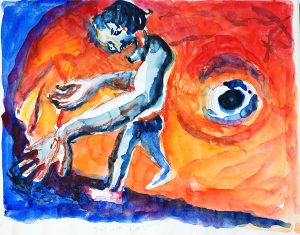
I built the 36″X58″ Stretcher bars and prepped the canvas with gesso before I started drawing “Cain”. The drawing was done with chunk graphite, pencils, charcoal sticks, and blending stumps, also several types of soft and hard erasers were used. Drawing on the canvas took as much as a month of work. Once it was finished I carefully painted over it with oil colors. Unfortunately, I didn’t have a digital camera at that time, as a result, the drawing was lost in the painting process. Painting on top of the under-drawing in oils added texture to the paint which I didn’t expect, creating something similar to a matt finish.
I’ve used “Cain” in several other artworks, which I will post at a later date.
